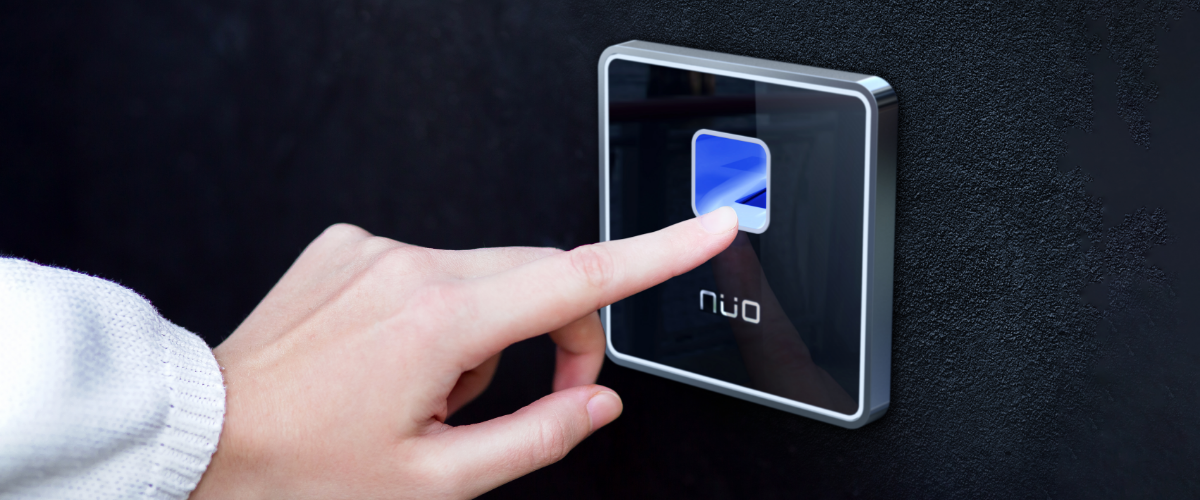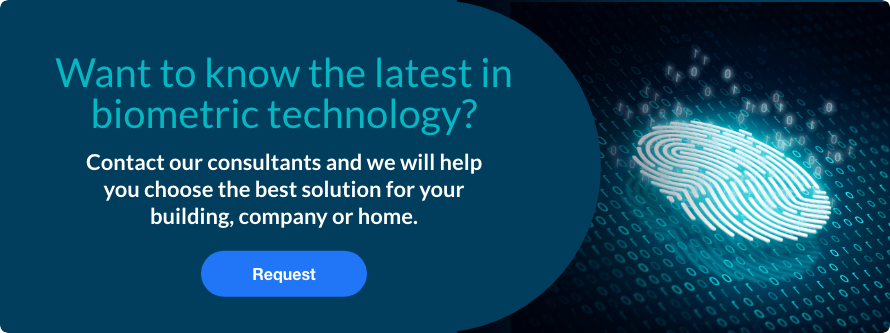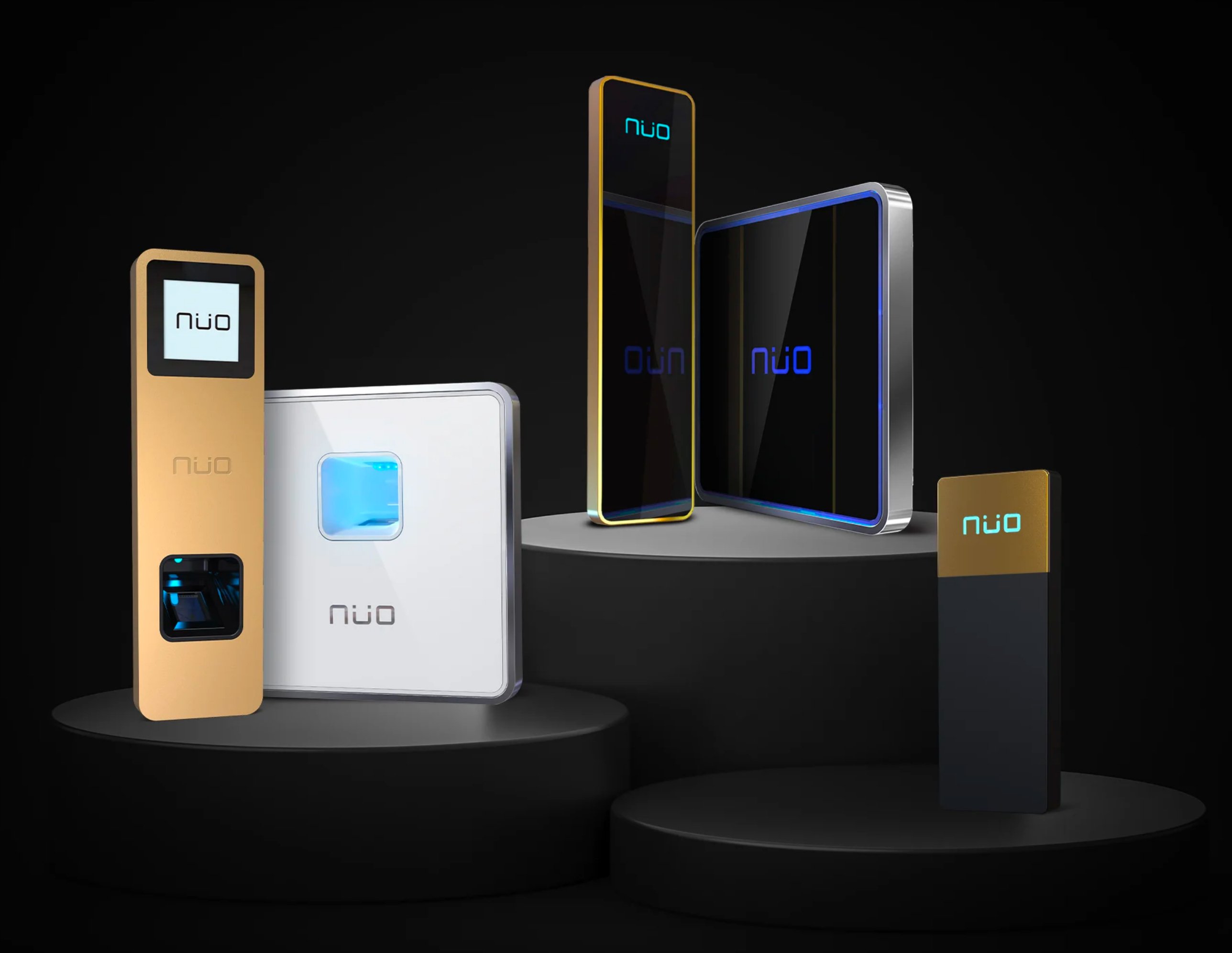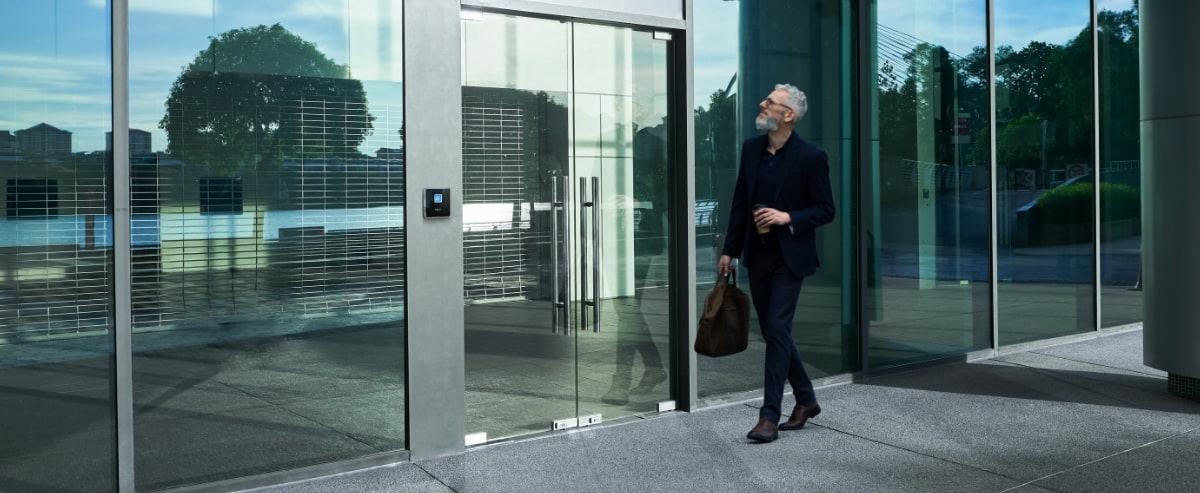The fingerprint reader is among one of the most striking technologies developed in recent years. Integrated into an access control system, this type of biometric reader makes it possible to achieve levels of security never imagined, as well as a user experience that is streamlined and free of any other types of inconveniences.
However, not all systems are the same: choosing the right fingerprint reader will make all the difference when it comes to a technology that works and one whose effectiveness is uncertain.
How does a fingerprint reader work and how should you choose the most suitable one for your access control system? We will tell you here:
- 01. What is a fingerprint reader?
- 02. Factors that define the quality of a fingerprint reader
- 03. Types of fingerprint readers
- 04. Advantages of having fingerprint readers
- 05. Our fingerprint readers
01. What is a fingerprint reader?
A fingerprint reader is a biometric identification solution that can determine a person’s identity by reading their fingerprint.
As part of an access control system, it is currently considered the most secure biometric technology to facilitate user authentication and collect information about access to facilities.
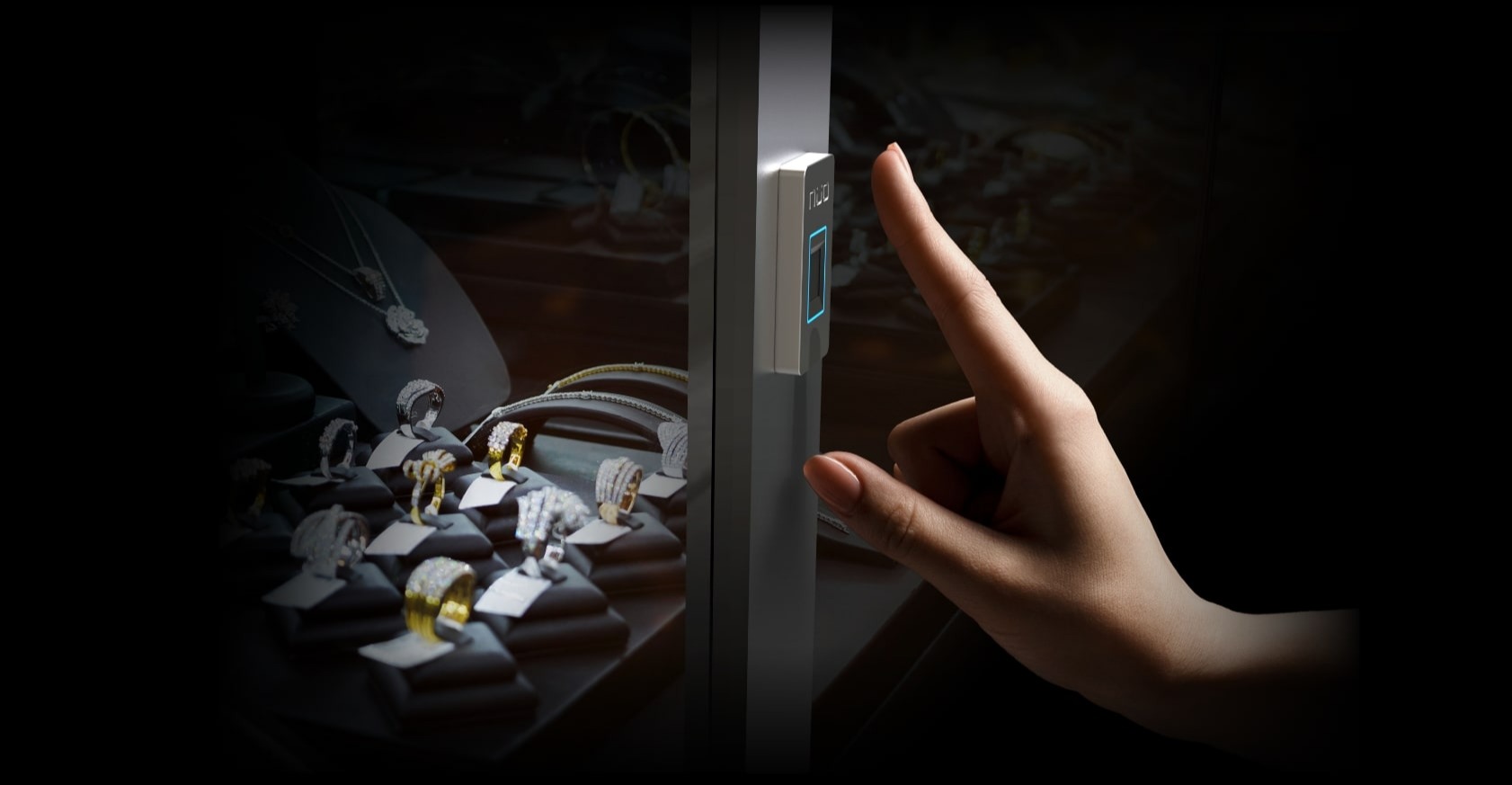
How does a fingerprint reader work?
First, the fingerprint reader is in charge of obtaining an image of the user’s finger. As for the technology that facilitates this reading, some fingerprint sensors use light, others use electricity and others use sound to map these fingerprints, as we explain below in the text.
Next, it analyzes the pattern of ridges and valleys of that image to later compare it with the different fingerprint patterns stored in the database, looking for coincidences between characteristics points (or minutiae) of the fingerprints that allow the user to be identified. Modern terminals carry out this process in just one second, being able to store databases of thousands of fingerprints.
Phases and features in an access control system
- Identification: Recognition of the person who wants to access the facilities, for example, through a fingerprint reader.
- Authentication: It verifies whether the person is in the database and therefore can be granted access.
- Authorization and access: Access is granted or denied based on the above information.
- Traceability: This involves obtaining records of the people present in a facility.
For more information: Access control companies: what you should demand from them
02. Factors that define the quality of a fingerprint reader
Before choosing a fingerprint reader, it is important to know that not all fingerprint readers are equally secure.
Furthermore, to quantify the performance and security of a fingerprint reader, a series of statistical measurement ratios are used.
Traditionally, the two factors to measure the effectiveness of a fingerprint reader are:
| FAR (Failure Acceptance Rate) | This parameter measures the percentage of times unauthorized people are incorrectly accepted as legitimate users. It is expressed as a fraction (for example, in standard biometric systems, an acceptable FAR value is 1/10,000, that is, when there is one unauthorized access out of 10,000 attempts). |
| FRR (Failure Rejection Rate) | This parameter measures the percentage of times registered people (with permissions to access the building) are rejected. |
Thus, logic indicates that a secure fingerprint reader system will present low values in these two ratios.
For further information: Parameters and indices to evaluate the reliability of a biometric reader
However, these statistical concepts are worth examining and do not provide any universal error curve for a biometric system. The reality is that there are other factors that will increase or deteriorate the overall performance of a fingerprint reader, and that must also be considered:
| The quality of the fingerprint image that the biometric system is capable of capturing. This quality can vary, in turn, due to a series of factors (ranging from dirt on the fingers to the uniqueness of some fingerprints with finer lines or very light or dark skin, worn prints, scars, or environmental factors and/or limitations of the technology itself). | |
| The correct analysis of the pattern obtained. In other words, the biometric algorithm for the extraction and comparison of fingerprint patterns for the user recognition process must be effective and high quality. | |
| The sample population with which the statistical study of the FAR and FRR values was conducted. As these are statistical concepts, most biometric system manufacturers do not obtain these error rates using the appropriate universal population (enough users, different skin tones, different operating conditions in real environments, etc.). Put into practice, if a manufacturer claims a FAR of 1/100,000, and has only done the test with 500 people, said FAR will present a significantly higher value than theoretically expected. It is therefore important that, when choosing a fingerprint reader, this information be properly contrasted. | |
| Reader response time. This is the total time that the biometric recognition process takes as perceived by the user, which will be especially important in access control systems with intensive traffic flows. |
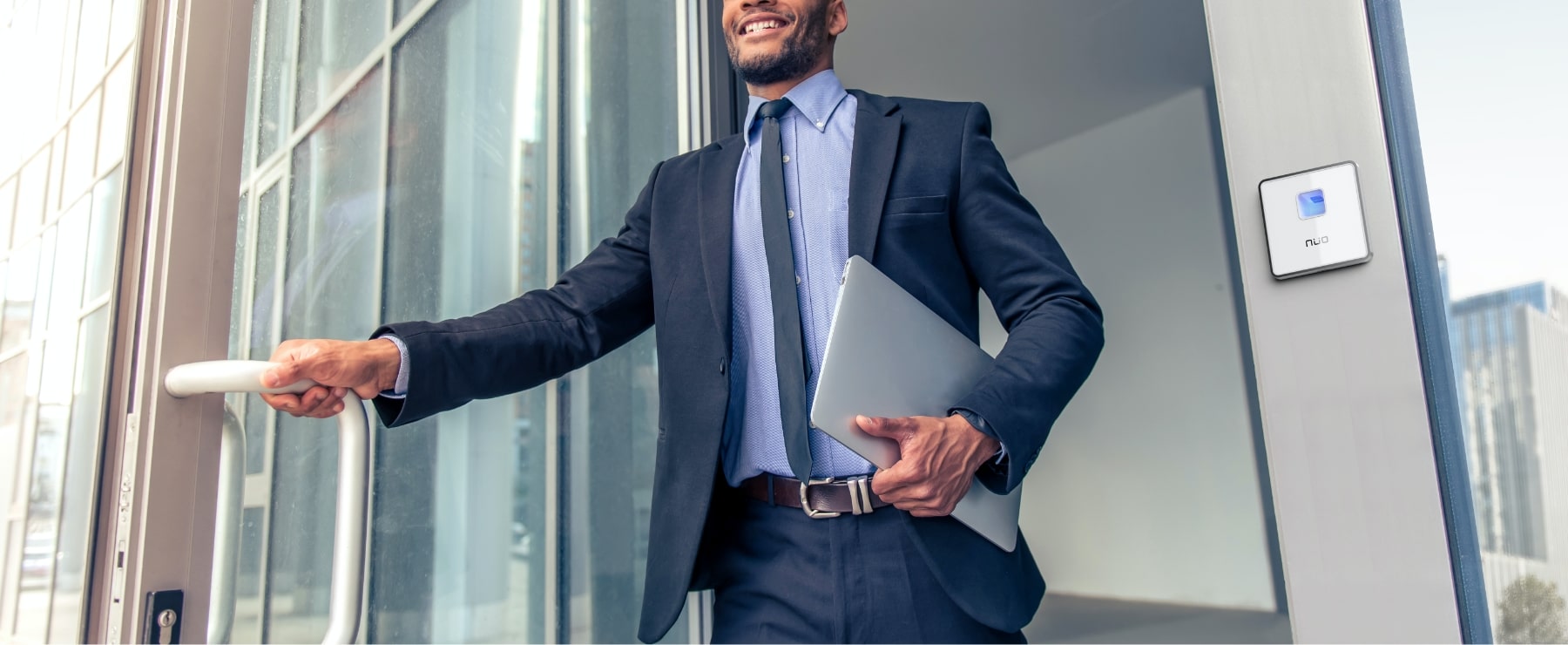
In turn, in the search for the most secure fingerprint reader, two additional parameters appear. The SAR (Spoof Acceptance Rate) and IAR (Imposter Acceptance Rate) metrics define the probability that the biometric system will accept a false registration (for example, through a photograph of a fingerprint, with a silicone finger or other similar forgeries).
In short, the appropriate choice of a biometric fingerprint reader system will depend on the level of security and robustness required for each use case or application. In general, a biometric fingerprint reader must guarantee very low FAR and FRR rates (high access security), but it must also guarantee robust and stable operation in any situation (for example, acceptable image quality for difficult fingerprints, a robust and highly tested recognition algorithm -even against possible fraudulent attack with false fingerprints-, and fast response times). Other factors to consider are:
- Ease of use (ergonomics)
- The simplicity of installation and assembly of the reader
- The physical protection of the hardware (tamper) against the unauthorized opening and/or manipulation of the device
- Or the logical protection of data and communications (encryption and secure storage of information)
03. Types of fingerprint readers
Biometric identification techniques can guarantee a high level of security and precision since they are based on the physiological or behavioral characteristics of people. These techniques dispense with the use of insecure passwords that are also easily forgotten by users, or physical elements such as cards which can be lost, loaned out to colleagues and for which there is no 100% certainty of the user’s identity.
Who can guarantee that the card that was used to access a certain space was in the possession of its owner and not a third party? For this reason, biometric identification provides the greatest confidence and security, and among the different techniques, the fingerprint continues to be today’s most widely implemented and accepted identification method, due to its great ease of use, convenience, and high security.
Currently, there are different types of biometric fingerprint identification, as we will see below.
Thermal fingerprint sensor
These sensors are based on measuring the temperature changes between the peaks (skin temperature) and valleys (air temperature) of a fingerprint.
When a finger is placed on the sensor, the ridges of the fingerprint come into direct contact with the pyroelectric surface of the device, which generates a higher temperature than in the valleys, which are not in contact with the reader. The sensor reconstructs a grayscale image of the fingerprint using the contrast of thermal distribution between the fingerprint patterns.
One of the main limitations of this type of sensor is that they require a difference of at least one degree between the finger surface and the ambient temperature to make a correct reading, which is not always possible (depending on environmental conditions).

Mechanical fingerprint sensor
These sensors detect the difference in pressure between the crests and valleys of the fingerprint when a finger comes into contact with the surface of the device. The ridges are closer to the sensor and generate higher pressure, while the valleys, that is, the deeper subdermal layers of the fingerprint, produce less pressure.
Thanks to its thousands of pressure transducers, the sensor can recreate a binary image of the finger using the difference in force applied to each of the individual transducers on its surface. The main disadvantage of these sensors is usually their limited measurement resolution, which makes it almost impossible to obtain a fingerprint image with a high level of detail. This limits its use to applications with low security and very few users.
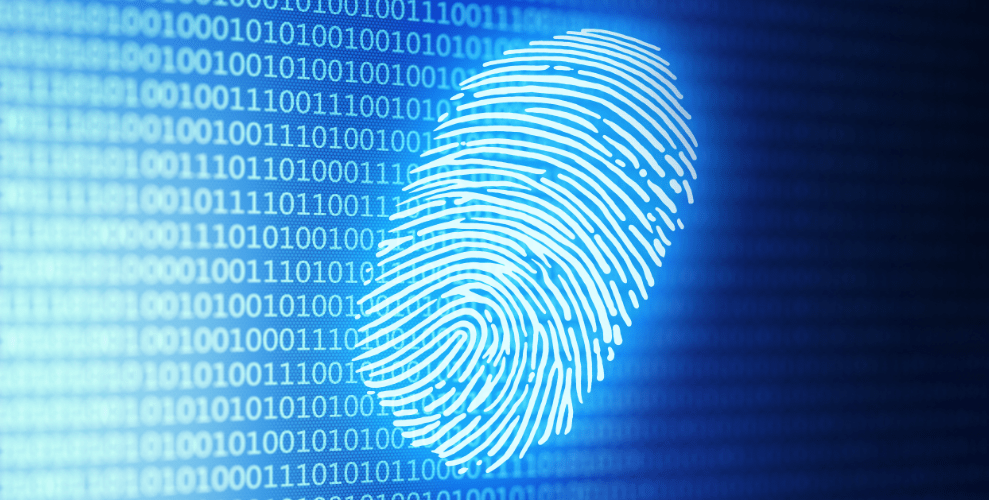
Capacitive fingerprint sensor
The use of these types of sensors is another common way to capture fingerprint images. The measurement process of the capacitive sensor is based on the reading of the electrical current from a matrix of capacitor plates located under the contact surface of the device.
Because human skin is conductive, the ridges of the fingerprint create capacitive coupling with the individual elements of the sensor array. The ridges, which physically interact with the capacitor plates, create a static charge that generates higher electrical capacitance, while the valleys of the fingerprint produce lower capacitance. These differences in electrical capacity caused by the ridges and valleys of the fingerprint allow an image of the fingerprint to be reconstructed.
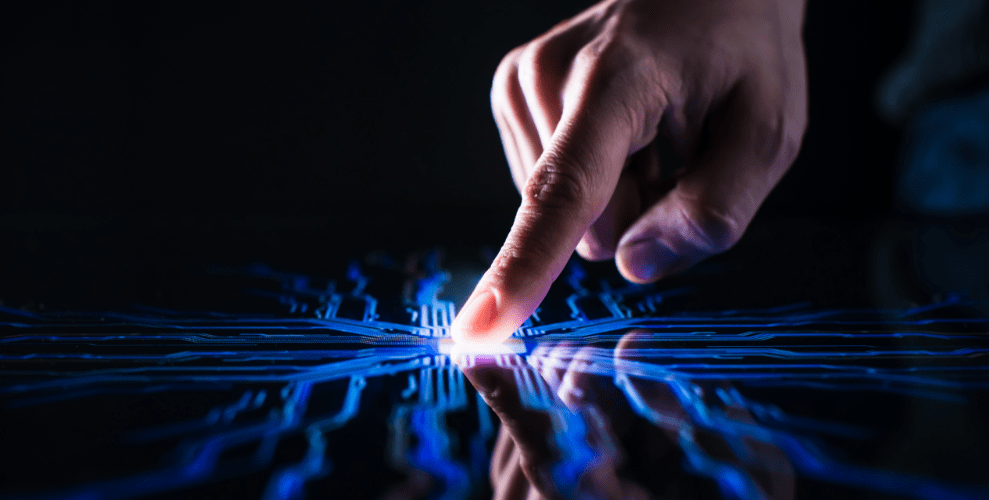
These sensors are immune to ambient lighting issues and typical image-based forgery of fingerprints. The latest generation sensors have a highly wear-resistant surface, but they are more sensitive to electrostatic discharge than optical sensors. They typically have a smaller capture area compared to optical sensors, resulting in an image with less information, which affects the number of users that they can confidently identify. Therefore, they should normally be used in applications with a smaller number of users, and proportional to the surface of the sensor.
Optical fingerprint sensors
As their name suggests, optical fingerprint sensors are based on capturing a photograph of the pattern of ridges and valleys of the fingerprint determined by the light and dark lines of the fingerprint. These sensors are usually the most frequently used in applications where a higher level of security and robustness is required and use an LED light to illuminate the finger when it rests on a glass surface or one of the faces of an optical prism.
The LED light is absorbed by the skin, generating a light scattering and reflection pattern that generates an inverted image of the fingerprint pattern, where the darker areas represent the ridges and the lighter areas the valleys.

The main drawbacks of this type of sensor, which are also common to other detection technologies, usually derive from the low quality and/or complexity of the captured fingerprints (worn, dry, scarred, cut, wet, dirty…). However, many of these problems have already been solved very effectively by the latest generation optical sensors, which use sophisticated multispectral optical detection techniques to detect difficult fingerprints. These techniques capture the image of the fingerprint under different lighting conditions (lights of different color -wavelength-, orientation, polarization, etc.).
These individual images contain complementary (different) information on the fingerprint, so properly combining all the images results in a much richer and more reliable fingerprint image, even in cases with fingerprints that are difficult to read. This unique feature, together with a greater capture area and image quality of this type of sensor, offers levels of security and robustness that are difficult to achieve with other detection technologies.
Contactless optical fingerprint sensors
The latest contactless optical fingerprint readers allow one or more fingers to be captured in the air, without having to place them on a contact surface. This is possible thanks to the powerful spatial detection of the finger position, a sophisticated lighting treatment to capture the smallest details of the fingerprint in high resolution, and the digital processing of the image to obtain the fingerprint pattern and send it to the database to match it and accurately identify the person.
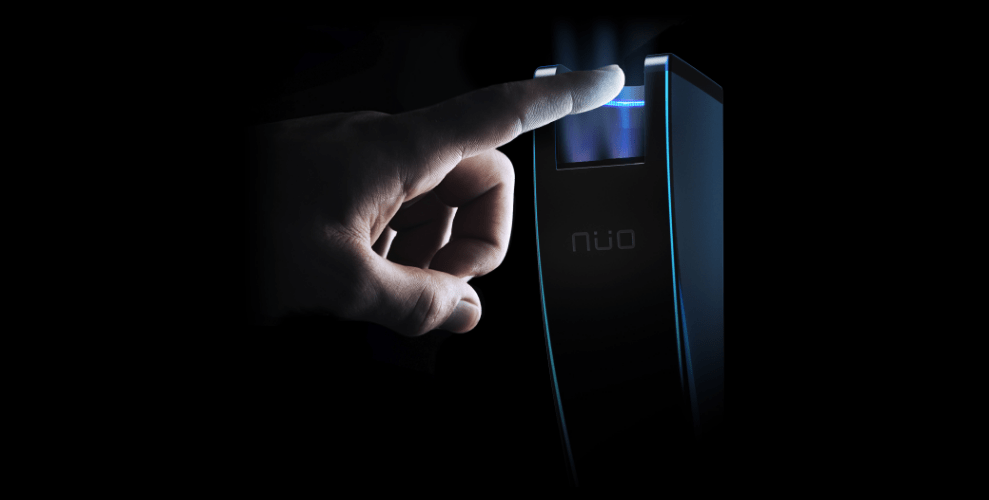
These unique characteristics of contactless optical sensors give them a set of additional advantages over other technologies, such as:
- An improvement in ergonomics when capturing the image of the finger in the air
- Increase in the quality of the fingerprint image by having a larger area and resolution
- The fingerprint is not deformed when pressing the finger against the glass of the sensor with more or less pressure
- Elimination of possible hygiene-related aversions among people
- By using more powerful processors, it is possible to increase security levels and reduce response times, especially in accesses with intensive traffic flows.
04. Advantages of having a fingerprint reader for access control
Security
It avoids identity theft often linked to card access control systems, since fingerprints are unique and irreplaceable. Thus, user identification is based on unique, non-transferable and 100% reliable biometric patterns.
Ease of use and agility
It is a simple and fast identification system, avoiding unwanted friction and waiting among users.
Impossible to fake
Being based on a physical attribute, it is a more difficult system to forge than a card. In addition, it cannot be guessed (as is the case with some passwords).
Why are fingerprints unique?
Fingerprints are the consequence of the unique genetic code of each human being. The pattern is formed during the gestation of the fetus, when the basal layer of the skin becomes wrinkled between the superficial and inner layers. Unlike other biometric traits such as the face (facial recognition technology), twin sibling fingerprints are completely different and unique to each individual.
This characteristic makes the fingerprint an ideal feature for the secure identification of people (not surprisingly, it is still widely used today in the forensic field along with other more sophisticated and expensive techniques such as DNA).
There is no risk of losing physical identification elements
This type of problem is avoided, which is common in systems based on keys or cards.
Puts an end to problems related to forgotten passwords
The fingerprint is always available and does not require the user to memorize any password.
You may be interested in: Biometrics: A Complete Guide
05. NÜO Planet fingerprint readers
At NÜO Planet, we have the widest range of readers on the market. Our philosophy is to provide companies with flexibility and offer adequate solutions to their problems. Because there is no “one size fits all” solution, at NÜO Planet we have developed a powerful line of readers that adapts to each type of need.
Specific outdoor readers resistant to all the elements, readers prepared to work with different numbers of users, for a more or less intensive use, and high-security readers to guarantee correct reading in traditionally problematic environments such as the health sector or the industrial sector, where users have worn fingerprints, scars, gloves, etc.
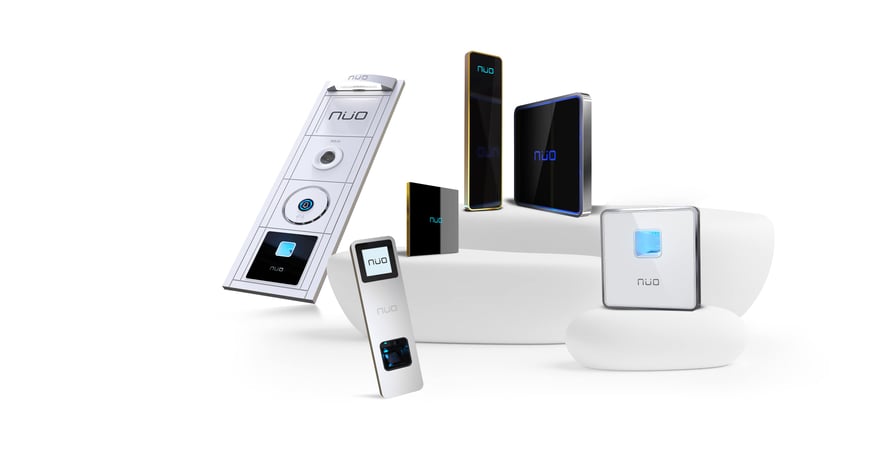
In any case, in addition to evaluating which fingerprint reader is best to include as part of an access control system, it is essential to have a structure in which the various elements work together and, in addition, the software and hardware complement each other. All this will ensure that breakdowns and invisible costs are avoided that could otherwise appear.
 |
Want to learn more about the fingerprint reader system and how to choose the right one for your project? Contact us and let’s chat about how we can help you. |
Escrito por: NÜO Planet
Categorías: Biometrics
